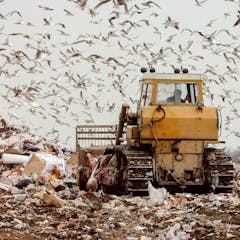
Articles on Wildlife
Displaying 421 - 440 of 646 articles

A new report by the WWF finds 60% losses in vertebrate populations since 1970.

National parks and nature reserves are vital for conservation, but are also great places for recreation. Balancing the two is tricky, but it can be done if we realise parks are not just playgrounds.

How should the US spend limited funds for conserving endangered species? A new data tool lets managers compare different strategies so they can allocate money to protect the most species.

The National Park Service is moving wolves to Isle Royale in Lake Superior to replenish a small pack on the island. Wolves prey on moose, which are overgrazing the island. It doesn’t hurt that they are charismatic.

The fossa, Madagascar’s largest predator, is a cat-like carnivore that eats everything from insects to lemurs. Because they are rare and elusive, scientists know very little about them, including how many there are.

Scientists asked young people to draw what they would like the natural world to look like when they’re older. Their imagination could help make conservationists more ambitious.

The ibis has become an Australian cultural phenomenon. The birds’ tenacity and fearlessness as environmental refugees mean they attract love and hate alike.

The Trump administration wants to step up logging, saying it will benefit wildlife by reducing forest fire risks. But wildfires create habitat for threatened Spotted Owls and many other species.

As California reels from another devastating fire season, environmental resource scholars explain how the state – and other fire-prone areas – can better prepare and coexist with wildfires.

Environmental organizations are using games to engage communities on conservation matters.

Cells that transmit nerve impulses in the part of elephants’ brains responsible for functions such as learning and memory are structured differently from those of any other mammal.

Translocations have become more frequent in Africa. Elephants are the biggest animals to be moved.

Seagulls have no qualms about sifting through dumps for scraps. But this buffet comes at a cost, filling their stomachs with plastic, glass, metal and even building materials.

Social media data can reveal where people are watching nature – and consequently where animals may be under pressure.

An attack on a WA mine worker has highlighted the danger of wild dingoes, particularly when attracted by humans’ food - one of the factors that can make an attack by wild predators much more likely.

As attempts to water down the Endangered Species Act have accelerated, public support for the act has stayed high. Then why do politicians keep trying to weaken the act?

Botswana is launching a consultative process to review the current ban on elephant hunting.

As ponds dry up, so too does our connection to nature.

By sequencing the genomes of other species, we can better understand our place in natural history.

It’s becoming harder and harder for animals to find human-free spaces on the planet. New research suggests that to try to avoid people, mammals are shifting activity from the day to the nighttime.





